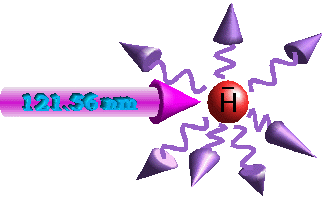| Max-Planck-Institut für Quantenoptik (MPQ) | Laser Spectroscopy Group Home |
|
|
Overview |
Introduction |
Antihydrogen production |
Antihydrogen spectroscopy |
Experiment 'CW-Lyman-alpha' |
The people working on antihydrogen at the MPQ are:

If you wonder what antimatter is,
or why it is so interesting, then read our Introduction
(don't miss the annihilation animation (100k)).
In 'Antihydrogen
production' and 'Antihydrogen spectroscopy'
you can read about methods how to produce and
measure antihydrogen.
Here at the MPQ itself the experimental
effort on antihydrogen is concentrated on running and improving a light source suited for
laser cooling and spectroscopy:
 |
In addition we participate in the experiments going on at the Antiproton Decelerator at CERN (Geneva) where the ATRAP experiments are performed with actual antimatter (we don't have antimatter at the MPQ!). You can find a picture of the AD hall experimental areas here.
Information about the ATRAP collaboration
is available at the ATRAP
collaboration home page .
[1] C. Schob et al., Phys. Rev. Lett. 82, 4960 (1999)
[2] A. Huber et al., Phys. Rev. Lett. 80, 468 (1990)
[3] Th. Udem et al., Phys. Rev. Lett. 79, 2646 (1997)